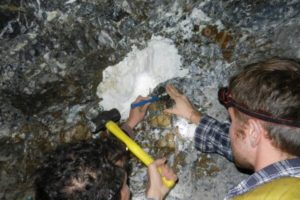san andreas fault
Lake-effect theory sinks, but quake timing questions go on
EUGENE, Ore. — (Feb. 10, 2011) — A chronology of 1,000 years of earthquakes at the southern end of the San Andreas Fault nixes the idea that lake changes in the now-dry region caused past quakes. However, researchers say, the timeline pulled f…
Big quakes more frequent than thought on San Andreas fault
Irvine, Calif., Aug. 20, 2010 — Earthquakes have rocked the powerful San Andreas fault that splits California far more often than previously thought, according to UC Irvine and Arizona State University researchers who have charted temblors there s…
Rupture of Denali fault responsible for 7.9-mag Alaskan earthquake
Geologists just back from a reconnaissance of the 7.9-magnitude Alaska earthquake of November 3 confirm that rupture of the Denali fault was the principal cause of the quake. According to Caltech geology professor Kerry Sieh, Central Washington University geological sciences professor Charles Rubin, and Peter Haeussler of the U.S. Geological Survey, investigations over a week-long period revealed three large ruptures with a total length of about 320 kilometers. The principal rupture was a 210-kilometer-long section of the Denali fault, with horizontal shifts of up to nearly 9 meters (26 feet). This places the rupture in the same class as those that produced the San Andreas fault’s two historical great earthquakes in 1906 and 1857. These three ruptures are the largest such events in the Western Hemisphere in at least the past 150 years.

